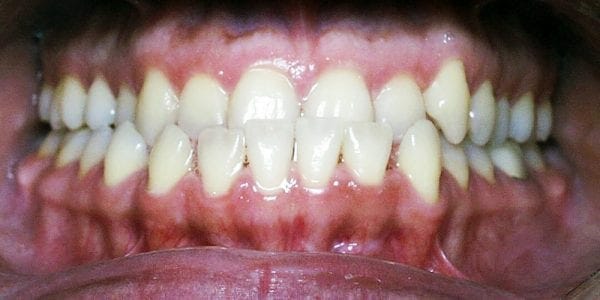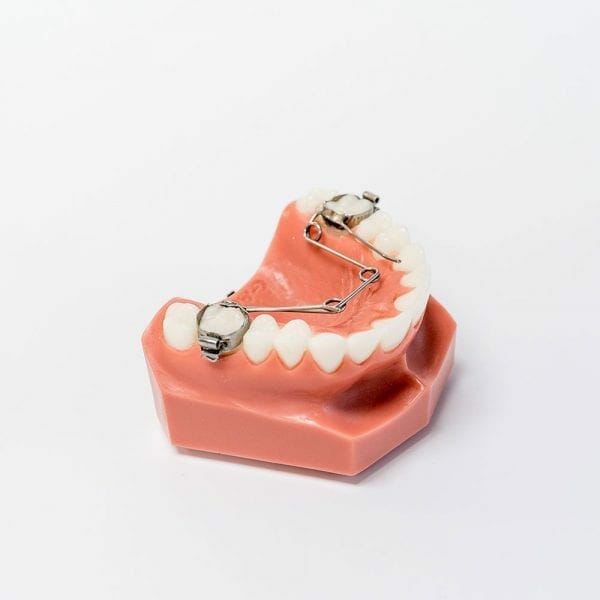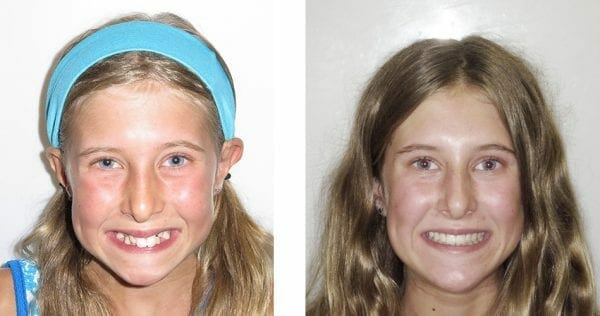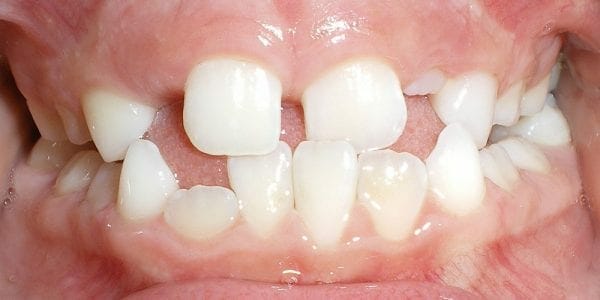Early Orthodontic Treatment Shapes a Healthy Smile
An orthodontist does much more than straighten teeth. The primary focus of many orthodontic treatments, especially for younger children, is fixing malocclusions (bad bites) and ensuring all teeth erupt normally and safely. Early orthodontic treatment is called interceptive orthodontics.
The goal of interceptive orthodontics is to fix developing problems earlier rather than later. This means patients normally do not need to undergo more extensive interventions when they get older. Also, orthodontists can easily and predictably accomplish some things in younger children that aren’t always possible with older patients.
Since 1991, Burke & Redford Orthodontists have been shaping the healthy smiles of patients of all ages in Riverside County, with convenient offices located in Temecula and Lake Elsinore. Dr. Redford and Dr. Burke have treated all types of dental problems requiring an orthodontist. This informative article describes the causes, consequences, and treatment options for many of them.
Crossbites

Crossbites occur when bottom teeth don’t align with top teeth. When you have an underbite (anterior crossbite), the upper front teeth will sit behind the lower front teeth when biting down. A posterior crossbite is when the top back teeth bite down inside the bottom back teeth.
Crossbites are caused by mismatches of the teeth or jaws (or a combination of the two). Early intervention is critical so the problem doesn’t get worse over time. Also, the upper jaw can be expanded more easily and comfortably in younger children. Although jaw expanding appliances can work on adolescents and adults, they are most effective on children because the jaw has not finished growing.
Crossbites treatments include:
- Banded or bonded expanders
- Appliances (such as protraction facemasks for underbites)
- Braces
- Surgery
Crowding
Overcrowding happens when a mouth has insufficient space for the teeth. If left untreated, the problem worsens over time—with
teeth becoming increasingly misaligned. Other potential issues include difficulty cleaning teeth, cavities, and gum disease.
Causes of overcrowding can be genetic (small jaw size or large teeth size) or environmental (finger sucking habits or premature loss of baby teeth).
Treatment depends on several factors, including the degree of crowding, location of crowding (front versus back of the mouth), patient age, and patient level of cooperation. Treatment options include:
- Braces
- Invisalign
- Retainers
- Space maintainers
- Palatal expanders
- Habit appliances
- Tooth size reduction
- Extractions
Spacing Issues
Some patients have other types of spacing problems besides crowding. These issues include; small teeth, oversized jaws, or a combination of both.

The most common problem is a large gap between the upper front teeth (diastema). After all adult teeth have erupted into the mouth (usually around 12 years of age), this gap rarely closes without treatment (typically braces or Invisalign). Early evaluation is important to ensure the excessive spacing doesn’t prevent permanent teeth from erupting normally. Additional problems associated with excess spacing include food getting stuck in open areas which can lead to gum disease.
Orthodontic treatment options include:
- Braces
- Invisalign
- Bonded retainers
- Porcelain veneers (by general dentist)
Open Bites
Open bites happen when there is not enough vertical overlapping of teeth—either at the front or back of the mouth. If back teeth don’t meet up correctly, this is known as a posterior open bite. An anterior open bite is more common. Open bites happen when back teeth touch while biting down, but the upper front teeth don’t overlap the lower front teeth properly in the vertical direction. This creates a vertical space between top and bottom front teeth.

Open bites are caused by mismatched growth/size of the jaws, finger sucking habits, tongue thrusting (forcing of the tongue against the front teeth), or mouth breathing. If left untreated, consequences include difficulty chewing, swallowing, speech problems, or the appearance of the tongue pushing through teeth.
Orthodontic treatment options include:
- Braces
- Invisalign
- Temporary anchorage devices (TADs)
- Bonded expanders
- Habit appliances
Protrusive Front Teeth
Protruding front teeth (upper front teeth that stick out) are commonly called “buck” teeth. The dental term is called overjet. Protruding teeth happen when the upper jaw is too far forward, the lower jaw is too far back, teeth have grown in at an angle, or a combination of these conditions. Patients with protruding front teeth may also have a deep bite (excess vertical overbite).

Orthodontic treatment options for protrusive front teeth include:
- Braces
- Invisalign
- Appliances (Ie. “overbite” correcting appliances such as a Herbst appliance or Carriere Distalizer)
- Retainers
- Custom mouthguards
Deep Bite (Overbite)
A deep bite (also called an overbite or a closed bite) happens when upper front teeth almost completely overlap lower front teeth. This type of malocclusion is usually caused by a small lower jaw. Other causes include missing lower teeth. Overdeveloped biting muscles (commonly found in patients who clench or grind their teeth) may also deepen a bite.
Fixing a deep bite (overbite) prevents excessive wear on teeth and chewing problems (including pain). Depending on the severity of the problem, an orthodontist may need to “open the bite” by moving upper and lower teeth. Patients with overbites also tend to have issues with overcrowding and misaligned teeth.
Orthodontic treatment options for deep bites include:
- Braces
- Invisalign
- Custom mouthguards
Missing Teeth and Impacted Teeth
Sometimes teeth do not develop, a condition is known as hypodontia. Other terms include tooth agenesis, aplasia of teeth, or congenitally missing teeth. The most severe forms are oligodontia (six or more missing teeth) or anodontia (the absence of all teeth).

Because patients cannot simply grow more teeth, treatment options focus on replacing or disguising missing teeth. Treatment will depend on the number of missing teeth, the location of the missing teeth, the amount of crowding or spacing present, the upper and lower jaw relationships, and the patient’s age. Options include:
- Braces or Invisalign to close spaces in the location of missing teeth
- Dental implants or bridges (by general dentist)
Impacted teeth describes when a tooth does not erupt through the gums when expected. This usually occurs when children transition from baby to adult teeth. Impacted teeth are extremely important to catch and treat promptly to prevent them from causing damage to adjacent permanent tooth roots. Because impacted teeth are usually without symptoms (pain), harm to teeth can be caused before the patient is aware a problem exists. Early detection is key!
Sometimes the fix is as simple as making room for the tooth to erupt naturally, by using a space maintainer appliance or removing a baby tooth. However, if the impacted tooth is significantly out of position or is threatening the health of an adjacent permanent tooth root, a more complicated intervention known as a chain and bracket procedure may be required.
Orthodontic treatment options for impacted teeth include:
- Braces
- Select removal of baby (or as a last resort, permanent) teeth
- Appliances (such as a Nance arch, lower lingual holding arch, or pendulum appliance)
- Chain and bracket procedure in conjunction with braces
Ectopic Eruptions
An ectopic eruption involves the malposition (wrong position) of a permanent tooth, which causes the tooth to erupt in the wrong place. In other words, a tooth does not follow the usual eruption course. The most commonly affected teeth are the upper canines and the first and third molars.
This problem usually presents when children have a combination of some baby and some adult teeth. Although the majority of ectopic eruptions self-correct before the age of 7, patients should be monitored closely to determine if and when intervention is needed. Early intervention can prevent complicated tooth relationships and associated problems.
Treatment focuses on guiding the tooth to a more favorable path and preventing damage to other teeth. Treatment will depend on the severity of the case. Options include:
- Orthodontic appliances (such as a space maintainers, expanders, or distalizing appliances)
- Tooth extractions (usually baby teeth)
- Chain and bracket procedure in conjunction with braces (if the ectopic tooth is threatening the health of an adjacent tooth root)
To schedule a free consultation for any of these dental problems to discuss interceptive orthodontics, contact Burke & Redford Orthodontists in Temecula or Lake Elsinore by calling our main office at (951) 699-8011. You can also fill out a consultation form on our website, and we will call you to schedule an appointment.